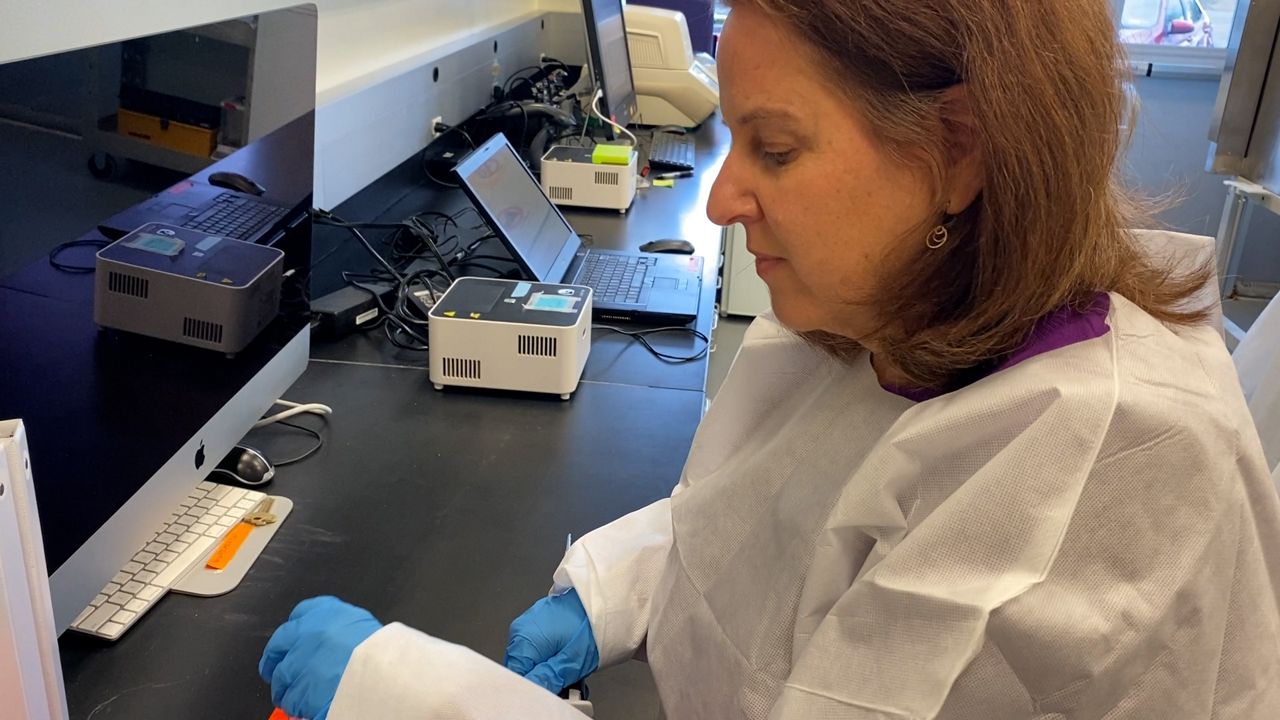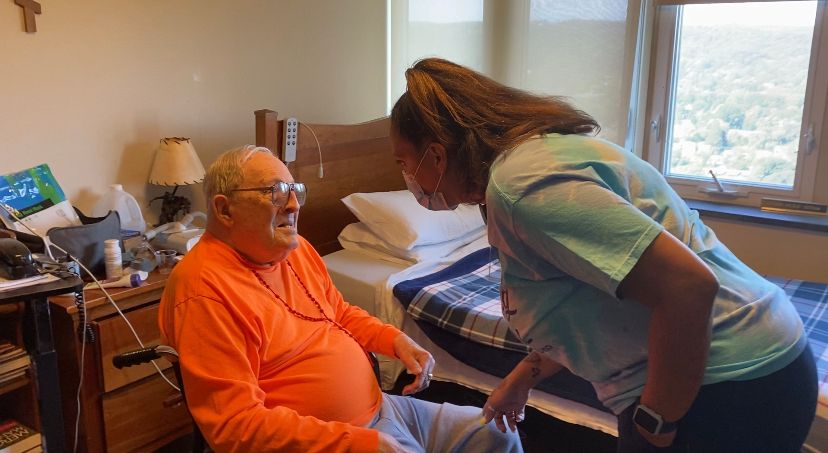Head, shoulders, knees and toes is where you should check for ticks after a day outside. That’s because they could be carrying a disease, like Lyme disease.
This fall, researchers are choosing the areas in Central New York they will do tick drags in hopes of potentially reducing diseases in ticks. Tick drags are how the ticks are captured for testing.
“These type of edge habitats are good places to look for ticks because ticks like to get up a little bit higher. That’s where they’re sitting and waiting for animals, people to walk by," said Harold Nugent, a tick educator with Cornell Cooperative Extension. “Basically, just want to take your drag, lay it out flat and then you’re going to walk a little ways, anywhere from 10 feet to 30 feet.”
What You Need To Know
- A five-year research project will be studying if a vaccinated bait fed to wild rodents will decrease Lyme disease in ticks
- More than 7,000 Lyme disease cases are reported every year, the highest tick-borne disease in New York, according to the state's Department of Health
- Researchers are looking for access to property in Central New York with around one to two acres, a wooded backyard and evidence of frequent deer
After grabbing the ticks, Nugent said they use a test tube, or other type of vial, to store them for testing purposes later.
Over the next five years, vaccinated bait will be left out for rodents like squirrels and chipmunks. Testing the ticks will determine if the vaccinated bait was effective.
“We’re hoping that the prevalence of Lyme disease in ticks ... will also go down and that’s what we’re going to be evaluating," said Paul Curtis, a wildlife science professor at Cornell University.
The study is funded by a federal grant from the Centers for Disease Control and Prevention that takes care of testing, materials and staff’s time.
“Tick-borne diseases have been on the increase for the last couple of decades, and so this is becoming a very important issue to try to mitigate risk associated with tick-borne diseases," said Curtis.
More than 7,000 Lyme disease cases are reported every year, making it the highest tick-borne disease in New York, according to the state’s Department of Health.
“There are times of highest activity, but it is something people need to be aware of at all times of the year. If the weather is nice, then there is a chance they may run into ticks," said Nugent.
Connecticut, Pennsylvania and Ohio are also conducting research in the coming years.
To conduct a tick drag on your own property to see how many ticks are living near your home, all you need is PVC pipe, a rope and some white fabric.
Researchers are looking for access to properties in Central New York with around one to two acres, a wooded backyard and evidence of frequent deer.








